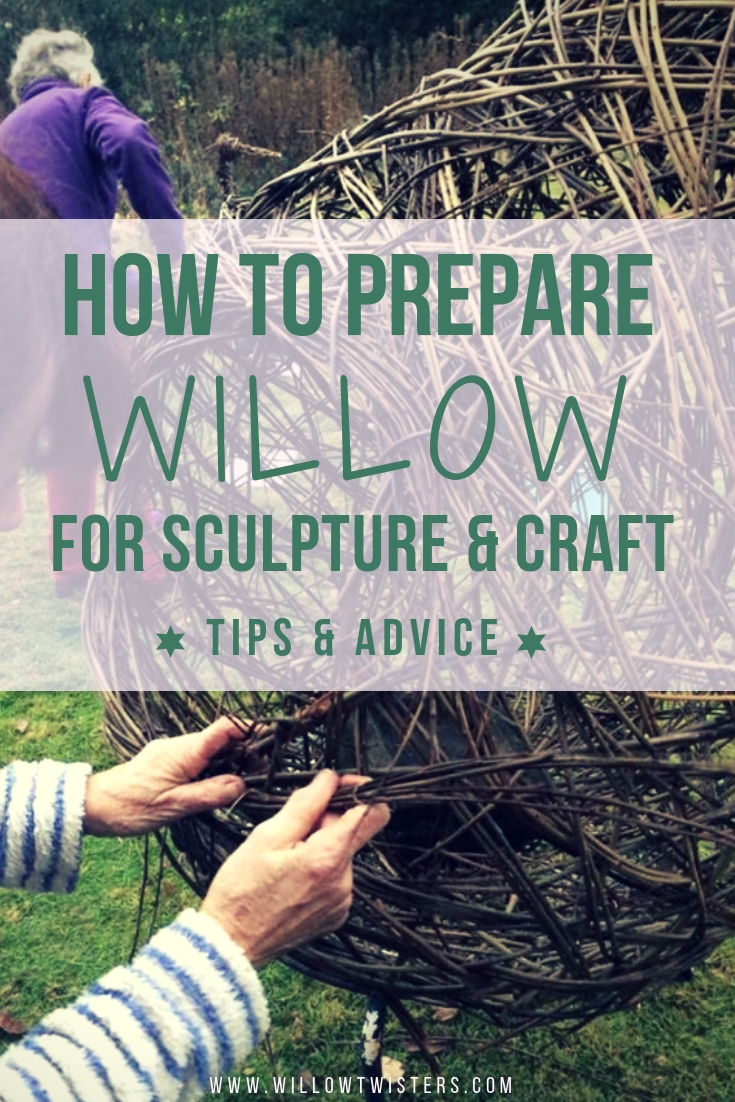How to prepare willow for sculpture & craft – TIPS & ADVICE
Hey Willow friends! We thought it might be helpful for some of you who are new to working with willow, especially the sculptural side of things, to know which type of willow we prefer to use for sculptural projects and how we carry out our willow preparation. We also thought it would be useful for you to know why we use the types of willow we use, which suppliers we use as well as some tips on willow preparation.
Willow types
There are literally hundreds of varieties of willow, many of these are found growing wild in the countryside or by streams and rivers, many are cultivars grown for ornamental appeal but the willow which is grown on a commercial scale for basketry or charcoal making is the type of willow I use. These are quite specialized cultivars grown for strength, flexibility and durability. They are fast growing and can be harvested annually or bi-annually.
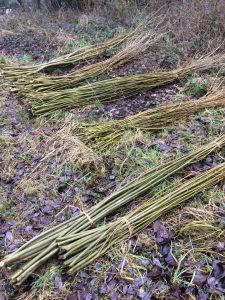
The type of willow I prefer to use for sculpture is a cultivar of a European species and is called Salix triandra. This variety seems to have all the right qualities for the intricate and detailed sculpting methods I use when making my sculptures.
This type of willow is strong and very flexible, it seems to glide over itself with ease and the bark rarely braises. When the bark has been left on the withies and they have been left to dry out completely, they are referred to in the trade, as ‘Brown’. These withies can be stored in a dry placed indefinitely until you want to use them, they will then need to be soaked.
Harvesting
Willow is harvested from the early spring months usually from the end of December to the end of March. During this short, seasonal period the coppiced willow whips, sometimes called withies, are referred to as ‘green’. These can be used for basketry or sculpture straight away without being soaked in water. These withies can also be left to dry out and then be stored for later use. However if you want to use them later in the year you will need to soak them.
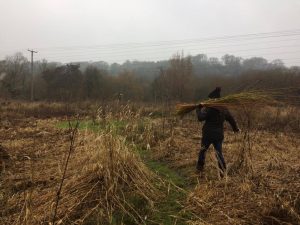
Soaking
When soaking the willow it will need to be completely submerged beneath the water so you will need some kind of long, narrow vessel, an old bath is useful for this. A few years back I was lucky enough to be given this big plastic tub but if you are having trouble finding something like straight away you might want to consider purchasing some soaking bags. They come in various sizes and lengths and don’t cost very much at all (approx £4 a bag) and can be bought from most of the suppliers I have listed below.
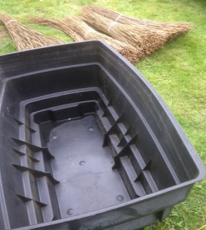
The general advice is to soak withies for 24hours per foot of willow so if your withies are 4ft long you will need to soak them for 4 days and nights. I usually add an extra day for good measure. The withies will want to float to begin with until they’ve absorbed the water so you will need to be weighed down with something heavy.
I usually use bricks or an old paving slab. If your soaking vessel is in direct sunlight cover it and if the weather is really warm I would advise changing the water half way through as the willow can begin to ferment, and essentially rot and won’t be any use, plus there’s nothing like the smell of stinky willow water!
After the willow has been in soak for the required length of time, I drain it and usually rinse it a little with the hose. I then allow it to stand for a while until it feels dry to the touch before working with it.
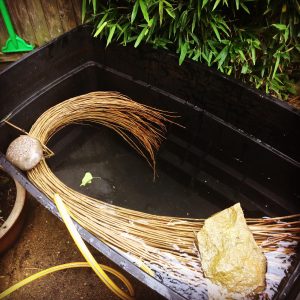
Suppliers
There has been a huge surge of interest in willow craft lately. This has led to a shortage in supply from some of the main willow growers/suppliers. This year in particular I had trouble getting my stocks from my usual suppliers Musgroves & Coates.
Both these suppliers are based in Somerset on ‘the levels’ where willow loves to grow on the flood plains. However this year I have planted some willow of my own and would encourage everyone with some space to grow, to do the same. Apart from avoiding shortages from suppliers you will also be providing a great habitat for wildlife.

Below we have listed web addresses for the main suppliers and others we have used.
- www.musgrovewillows.co.uk
- www.englishwillowbaskets.co.uk
- www.jprwillow.co.uk
- www.willowgrowers.co.uk
- www.worldofwillow.co.uk
- www.willowwithies.co.uk
- www.yorkshirewillow.co.uk
If you would like to join our (ahem… the first online school of willow sculpture & craft!) to receive notifications on courses then click on image below to be taken to our ENROLL Page
If you found this article useful or would like to ask us further questions, then please leave us a comment in the box below

